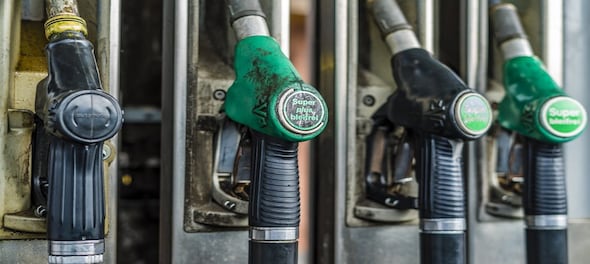
Pitching for options besides electrification and hybridisation, the Society of Indian Automobile Manufacturers (SIAM) has prepared and circulated a white paper on alternative fuels in the country.
A white paper is a report that informs stakeholders about an issue and presents some guiding principles for future course of actions.
The industry body has proposed the government to look at CNG, LNG, LPG, Hydrogen and biofuels like ethanol, methanol and bio-diesel as alternative fuels and roll out infrastructure with a firm plan for next five years and tentative plan for next 10 years.
In the paper, a copy of which has been reviewed by CNBC-TV18, SIAM has proposed the industry will endeavour to make gasoline powered two-wheelers and passenger vehicles compatible with 10 percent ethanol and 3 percent methanol blends by 2025. By 2030, industry could make specific vehicles compatible with 20 percent ethanol-blended gasoline depending upon sustained availability of fuels with separately labelled dispensing at fuel stations, it said.
For diesel-fueled vehicles, SIAM has proposed that the industry body could make vehicles compatible with BVII or 7 percent bio-diesel blends by 2020 and. For passenger vehicles, while large-scale electric cars are expected from 2030, BVII compliant vehicles can continue to support the initiative of reducing crude import, SIAM has suggested.
Mooting a higher penetration of CNG in the light commercial vehicle and city buses segment, SIAM expects that a deployment of 6,000 CNG stations by 2025 and 10,000 stations by 2030 will be able to cater to 20 million CNG vehicles. As of today, there are 1300 CNG stations across India, catering to 3 million vehicles. Such infrastructure can result in 5 to 10 percent of new vehicle sales to be in CNG category, as per SIAM.
"For trucks, industry will also invest in research and development in the field of LNG and di-methyl ether and would try to achieve 5 percent and 10 percent penetration by 2025 and 2030, respectively, depending on availability and necessary roll out of fuel dispensing infrastructure," SIAM said.
Similarly, for three-wheelers, CNG penetration could be increased and by 2030, the gasoline-powered vehicles could be made compatible with 20 percent ethanol-blend or E20 and diesel vehicles with B7, SIAM has proposed.
"While electrification and hybridisation of fleet will be required to lower the usage of fuel for automotive purposes, the National objectives of energy security, lowering emissions can be supported by the augmentation and promotion of alternative fuels," SIAM said in the paper.
SIAM has also asked the government to provide clarity to the industry to develop vehicles and has requested that the progress of each phase of alternative fuel implementation be reviewed by a single agency under the government.
"Specific interventions by way of fiscal incentives will be required to improve customer acceptance and hence, penetration of the technologies to achieve scale and corresponding reduction of fossil fuel usage," SIAM said, adding that lower taxes on production and distribution infrastructure, viability gap funding for high cost of technology acquisition and lower taxation on sales of alternative fuels can be used as incentives.
At present, the state of development in various alternative fuels is yet to reach significant levels. In ethanol, against a target of 10 percent, set in 2013, only 2.3 percent of average ethanol blended was achieved in 2016. In case of bio-diesel, while vehicles are compatible with 5 percent bio-diesel blended fuel, availability of fuel is remains constrained. For methanol, India is still at a nascent stage in usage and production. Factors of cost and infrastructure are limitations in LNG and CNG.
Research is taking place in the areas of hydrogen and fuel cell, bio-CNG, drop-in fuels, bio-hydrogen.
Check out our in-depth Market Coverage, Business News & get real-time Stock Market Updates on CNBC-TV18. Also, Watch our channels CNBC-TV18, CNBC Awaaz and CNBC Bajar Live on-the-go!


Punjab Lok Sabha elections: Check full list of AAP candidates and constituencies
May 18, 2024 12:59 PM
PM Modi, Rahul Gandhi election rallies in Delhi today: Here are the routes to avoid
May 18, 2024 11:28 AM

